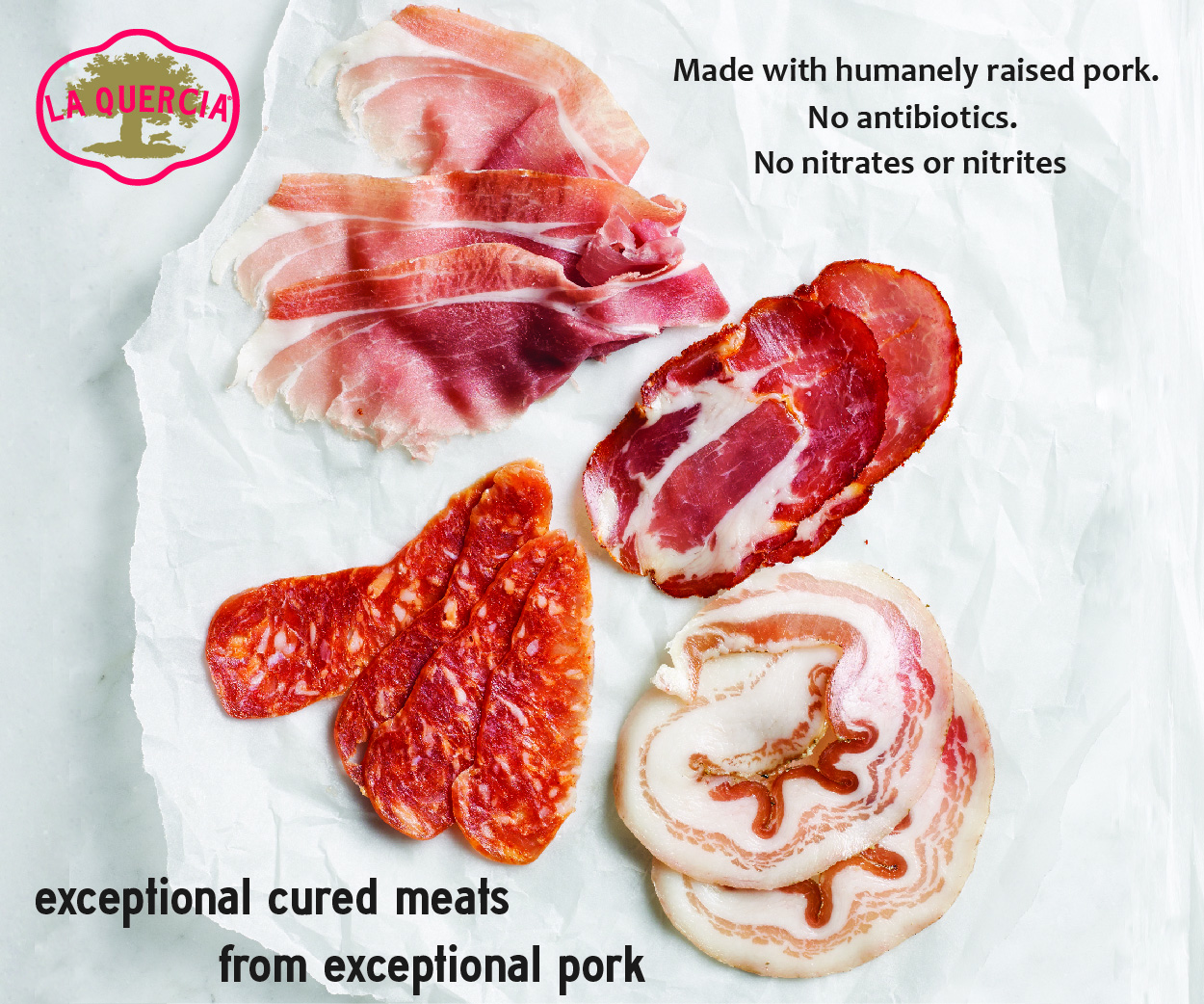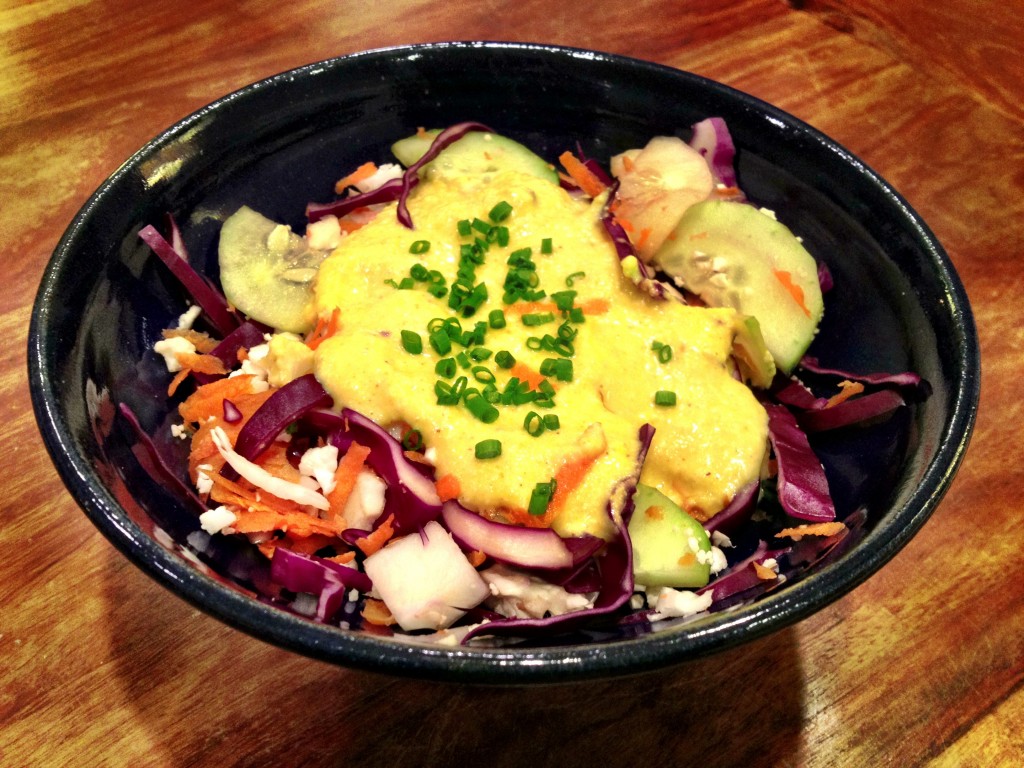
AMY: I am secretly obsessed with raw food.
It started when I was seeing a natural health coach in Washington, D.C. He suggested more living, green foods. That started as spinach in my smoothies and morphed into juicing green veggies (see Sarah’s awesome post from earlier this month!) I started reading a few raw food blogs online, discovered Ani Phyo, and began to collect raw food cookbooks.
I realized I was hooked last month when a friend pointed out how many raw cookbooks I have. They far outnumber anything else in my collection. I bought four on a recent trip to Portland, Ore., alone. I mean, Powell’s – come on! They had, like, six rows of cookbooks, and six shelves devoted strictly to raw. I actually started crying … it was that beautiful.
SARAH: I can attest to Amy’s raw obsession. I have seen her cookbooks. I have been her sidekick at a raw cooking class. And guess who picked this topic for May? Neither April nor I would suggest such a thing. But it fit the spring eating month perfectly. That’s what it’s all about!
Proponents of the raw food movement say that, by cooking food, you lose many vital nutrients and enzymes. Enzymes in food begin to break down around 104-120 degrees Fahrenheit. Furthermore, cooking at high temperatures may introduce carcinogens, toxins and free radicals. All of this can lead to cancer, diabetes, heart disease and other illnesses, raw proponents say.
So how do you make raw food? It takes a lot of planning and new tricks, tools and techniques.
APRIL: I have to admit, when this idea came up, I can’t say Amy’s obvious enthusiasm was contagious.
SARAH: Agreed!
APRIL: I love cooked food! Cooked veggies! Whole grain pasta and rice! Chickpeas! Fish! Soup! LAMB!
SARAH: Sing it sister! And what about baking, for heaven’s sake?!
AMY: You two are ridiculous.
APRIL: So when the idea of trying a raw menu came up … I was a bit dubious.
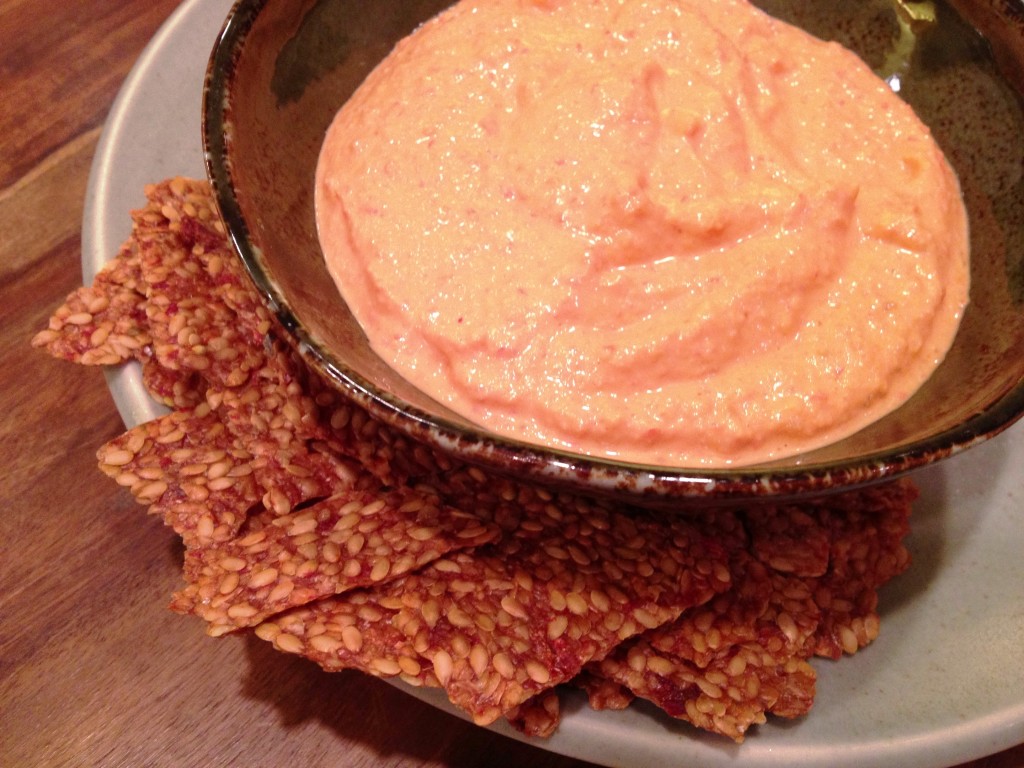 Don’t get me wrong. People should be free to adhere to follow whatever food regimen they choose without being pestered or judged. But, frankly, I’m just not big on any particular food philosophy, other than eating balanced, mostly vegetarian meals in modest portions at a slow speed. I love vegetables and eat several servings each day, while eating very little junk/fried/fast food and preparing almost everything I eat from scratch. This approach seems to have served my cholesterol, blood pressure, weight and energy levels well, and it’s simple to follow.
Don’t get me wrong. People should be free to adhere to follow whatever food regimen they choose without being pestered or judged. But, frankly, I’m just not big on any particular food philosophy, other than eating balanced, mostly vegetarian meals in modest portions at a slow speed. I love vegetables and eat several servings each day, while eating very little junk/fried/fast food and preparing almost everything I eat from scratch. This approach seems to have served my cholesterol, blood pressure, weight and energy levels well, and it’s simple to follow.
AMY: I agree, and definitely like a good steak now and … now. My problem is moderation (clearly). With veggies, I don’t have to worry about that, and thankfully, I’ve always loved vegetables. Given that, a diet based primarily in raw veggies seems a no-brainer. The hurdle for me has been time: preparing raw foods is time consuming. Don’t freak out … it just requires a little planning. Your body will really thank you for it. I’m doing a juicing cleanse with Sarah right now, mixed with raw, and my skin is glowing!
SARAH: Yes, it’s true. Again, with the right tools and a little prep, juicing has been so easy. Our skin, our tummies, our whole bodies are much happier and more glowier than ever. I’m finding juices to be good tools to mix into my weekday eating routine. Even my husband, Mr. Texan-Lover-of-Meat, has been doing the juice with me! And his skin is also glowing.
APRIL: Amy’s enthusiasm aside, I did freak out! The one thing I thought raw food would have going for it was simplicity. What could be easier than eating raw food, for heaven’s sake?
Ha! Rookie mistake. There’s definitely a learning curve with this raw business. Combining certain foods (and not others) to maximize nutrient absorption. Preparing many assembled foods, like loafs or tarts, a day in advance. And when Amy told me I had to soak and/or sprout my raw nuts for them to be considered raw (say what?), I was ready to throw this entire idea into the compost bin.
But I forged ahead, because I said I would (and because Amy called to talk me down …). Aside from the soaking of the nuts (and unnecessarily drying them, then soaking them again), everything in the coconut curry dish I chose came together fairly quickly.
SARAH: I am with you on this one, April! I also had to talk with Amy during a mild break down in the baking aisle. Note to self, the baking aisle is not the aisle to buy raw ingredients. Raw cocoa powder? Who knew cocoa powder wasn’t already raw?
All told, though I had a similar experience to April’s, my brownies were a cinch to whip up in the food processor.
AMY: And they were both AMAZING! The great part is, once your taste buds get acclimated to not having all the sugary, processed foods, there are so many yummy treats you can eat (like everything, in moderation!) Sarah’s brownies totally proved that point for me — and that moderation will still be a challenge. They were so, so good. I make raw “cookies” as well, which are delish!
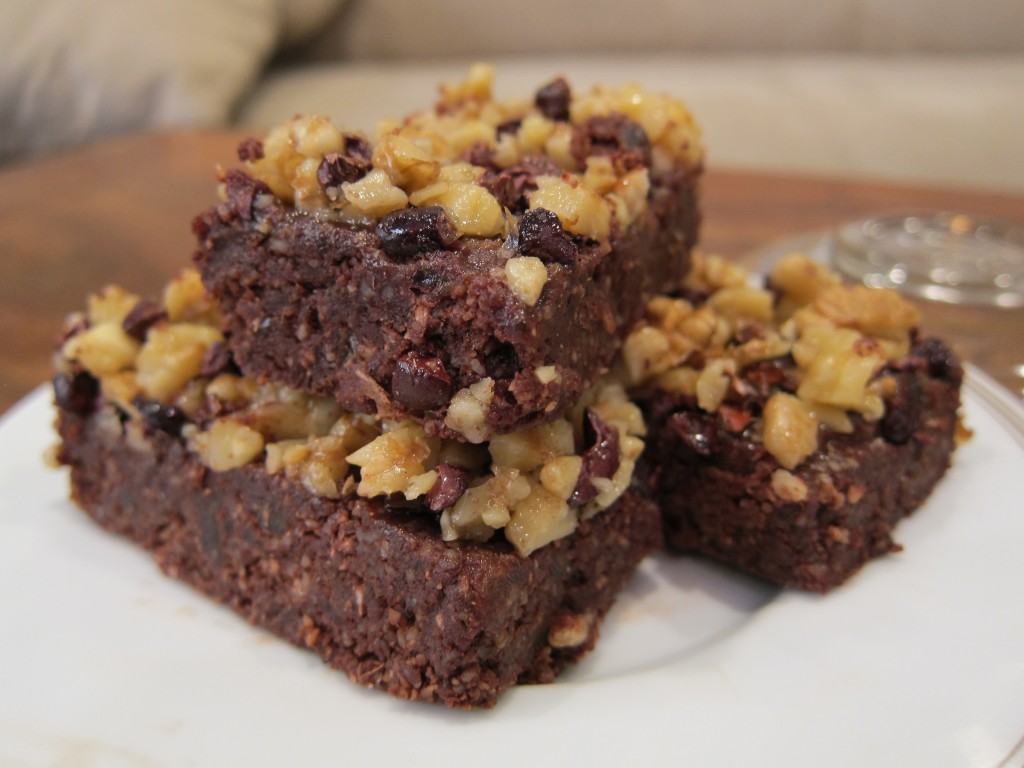 APRIL: No, I wasn’t particularly enthusiastic about this experiment. But here’s the thing: Much to my surprise, Amy is right on — everything we prepared was delicious. Those brownies! So tasty! And the coconut cashew curry was every bit as good as the cooked curries I prepare frequently. Added bonus: In the process, I rediscovered young coconut, which I loved while living in India but have enjoyed very infrequently in recent years (plus, it’s fun to hack away at the things to open them).
APRIL: No, I wasn’t particularly enthusiastic about this experiment. But here’s the thing: Much to my surprise, Amy is right on — everything we prepared was delicious. Those brownies! So tasty! And the coconut cashew curry was every bit as good as the cooked curries I prepare frequently. Added bonus: In the process, I rediscovered young coconut, which I loved while living in India but have enjoyed very infrequently in recent years (plus, it’s fun to hack away at the things to open them).
SARAH: I will admit to being more excited than April was. Maybe it was the fact that I had sat through a raw cooking class and the food we made was good! Or maybe it was Amy’s infectious optimism. I can be a sucker for it and am frequently pulled into trying new things. Whatever it was, it worked! I loved the whole meal. And would make it all again.
APRIL: I love cooked foods far too much to consider “going raw,” but I was pleasantly surprised by what we tried and can certainly imagine integrating some raw entrees into my diet from time to time. (Little evil secret: I poured our leftover raw curry sauce over cooked rice for lunch the next day. Delicious! Don’t tell Amy!)
I also get the sense that, once one does a significant amount of studying up, it would eventually become much easier to follow a raw diet. But you really do need to invest in that homework. While frantically trying to figure out what on earth I was going to make, I read plenty of horror stories of people who jumped right in and ended up in gastric distress.
SARAH: Yikes, no one wants a hurty tummy! Definitely do your research. It could even be a tool to use here and there in your diet, if not 100 percent of the time, whether you want to detox your body or take a little break from the usual. The wiki article on raw foodism is a good introduction to the benefits and definitions. When in doubt … wiki it!
AMY: <Ha ha – two more down! My evil plan to covert the world, one raw foodist at a time, is off to a fabulous start, says Amy, with a sinister grin!>
Here are some great tips to get you started!
Raw Sunflower & Red Pepper Hummus
Adapted from Ani Phyo’s book, “Ani’s Raw Food Essentials.”
1/2 cup sunflower seeds
2 cloves garlic
1 teaspoon sea salt
2 cups red bell pepper, diced
1/3 cup tahini
1/4 cup lemon juice, fresh squeezed
1/2 teaspoon cumin
If you have a Vitamix with a dry container for shopping nuts, ground your sesame seeds into powder. If not, a food processor or good blender will do. It may be a bit chunkier, but that’s okay. Add garlic, pre-chopped a bit if you like, and salt. Blend. Add diced red pepper, tahini, lemon juice and cumin. Blend until smooth.
Serve with a homemade raw cracker, or cheat (like I did) and get some premade. Just make sure the package indicates they are raw if you are trying to be militant!
This makes 2 cups, but if you like it as much as I did … take my advice and double it. Though the original recipe suggests it only keeps two days in the fridge, we enjoyed it for about a week.
Thai Coconut Curry
Serves 4, but we had lots of delicious curry sauce left over.
Adapted from ‘Ani’s Gone Raw’. I couldn’t find raw peanuts, so used cashews, which need to soak only a few hours. Fresh young coconut is not the hard-shelled brown kind you may be familiar with. You can find them in the produce section of big markets like Whole Foods, trimmed into a white cylinder with a pointy top and wrapped in cling wrap. Cute SteffySue can show you how to extract the meat and water here. It takes a little practice, but it’s fun!
1 1/2-inch piece ginger
1 cup soaked cashews, drained
1 cup finely chopped coconut meat from a fresh, young coconut
1/2 cup coconut water (from your fresh coconut)
1 tablespoon raw almond butter
2 teaspoons Bragg Liquid Aminos
1 pressed/finely chopped garlic clove
1 teaspoon tumeric
1 teaspoon curry powder
Juice of 1 large orange
1 Thai chile (optional — I didn’t use one)
1/4 head cauliflower, chopped into small chunks
1 small carrot shredded/grated
1/4 head red cabbage, shredded
1/2 cucumber, cut into thin-sliced half-moons
cilantro for garnish (or basil leaves and mung bean sprouts)For the sauce, first extract your ginger juice by grating it on a Microplane and pressing the juice out. It’s good to do this over a small bowl. Then throw the juice and all the ingredients through the orange juice in a blender and blend, blend blend. You want this nice and smooth — it will be grainy, but you don’t want any veggie bits. Add your chile a little at a time for taste.
Toss your shredded raw veggies and cucumber together in a large bowl. You can pour all the sauce over it and dish it up from there, or you can portion the veggies into individual servings and pour on as much sauce as you’d like. Top off with your garnishes.
Dark Chocolate Ginger Non-Brownies
I found great inspiration from this blog’s recipe for these brownies. I needed all the help I can get! Anyway, these were a hit. And if you like Lara Bars, you’ll dig these.
Brownie Base
2 1/2 cups raw walnuts
3/4 cup raw cacao powder
1/2 cup raw shredded coconut
1 teaspoon grated, fresh ginger
1 teaspoon vanilla extract
Pinch of sea salt
1 cup pitted dates, well-packed
2 tablespoons cold-pressed coconut oilTopping
3 tablespoons raw agave nectar
1/2 teaspoon grated fresh ginger
1 cup finely chopped walnuts
1/4 cup raw cacao nibsTo make the brownie base, add the walnuts to a food processor and finely chop. Add the cacao powder, coconut, ginger, vanilla and salt. Process again to combine all ingredients. Separate the dates from each other and place them, along with the coconut oil, into the processor. Pulse to slowly combine the dates. After incorporated (a few pulses), run the processor until all ingredients are combined and a sticky dough has formed. Scrape the dough out into an 8-inch baking pan. Press the dough evenly and firmly into the pan.
To make the topping, whisk the ginger and agave nectar together in a bowl. Mix in the nuts and cacao nibs. Pour topping over the brownie and spread evenly on top of the brownie base. Put the brownies into the freezer to set, about an hour to firm.

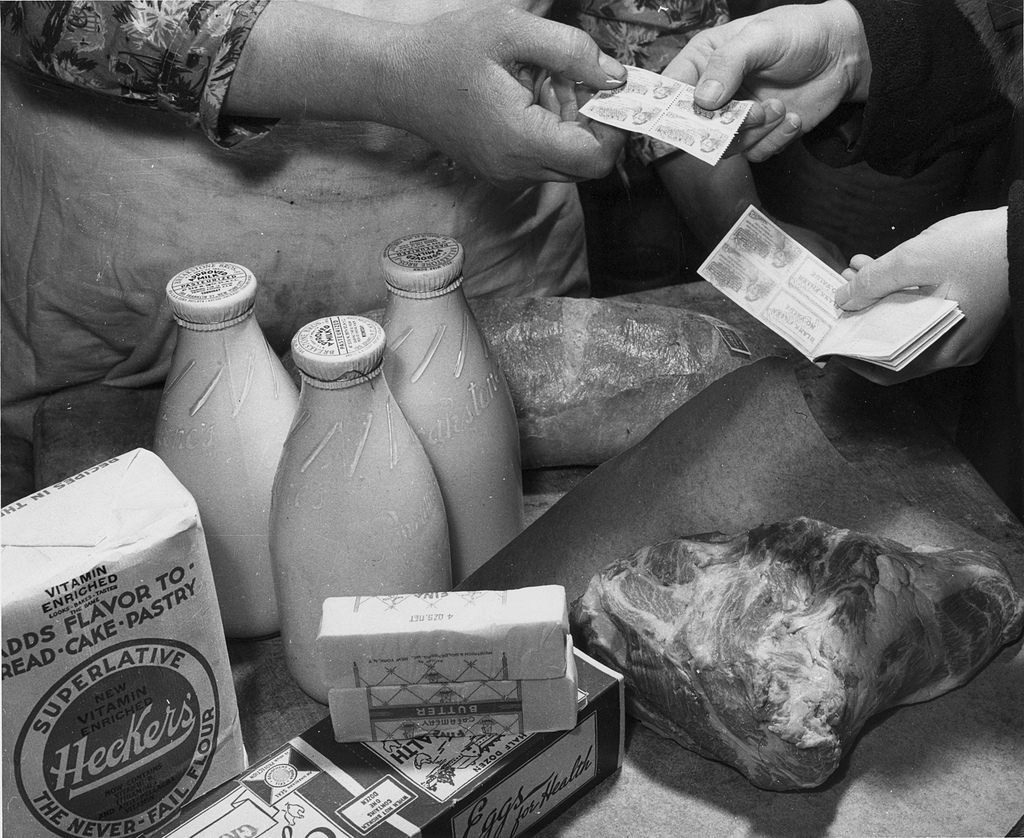

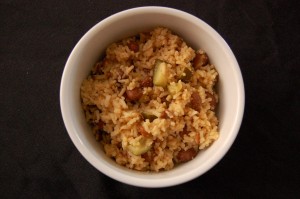 You should also choose meals that are flexible and forgiving with their ingredients, meaning you can swap one veggie or starch for another, depending on what’s on sale. This also breaks the monotony of making the same meals again and again. There are a ton of great recipes that fit the bill on all of these counts:
You should also choose meals that are flexible and forgiving with their ingredients, meaning you can swap one veggie or starch for another, depending on what’s on sale. This also breaks the monotony of making the same meals again and again. There are a ton of great recipes that fit the bill on all of these counts: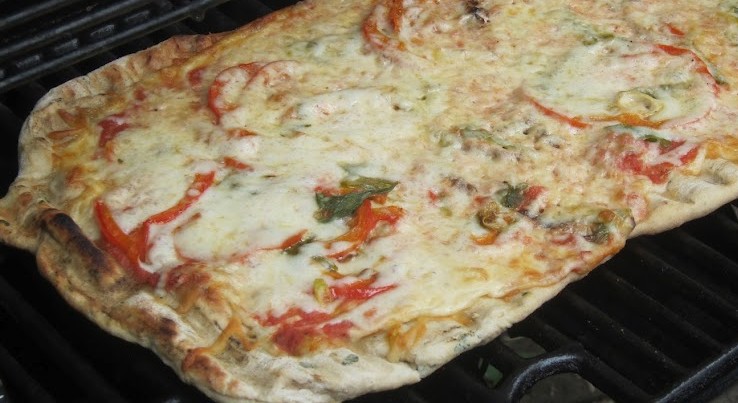 AMY: My mom first told me about grilling pizza a year ago. Apparently, her boyfriend (we’ll call him “Bob” … because that’s his name) — does it all the time. Now, gun-slinging Captain Bob is already a total character. But this whole idea just struck me as really out there. I just couldn’t figure out the logistics. I mean, doesn’t the dough drip right through the grate? Does the sauce make it soggy? What about getting the cheese all ooey, gooey bubbly and browned on top?
AMY: My mom first told me about grilling pizza a year ago. Apparently, her boyfriend (we’ll call him “Bob” … because that’s his name) — does it all the time. Now, gun-slinging Captain Bob is already a total character. But this whole idea just struck me as really out there. I just couldn’t figure out the logistics. I mean, doesn’t the dough drip right through the grate? Does the sauce make it soggy? What about getting the cheese all ooey, gooey bubbly and browned on top?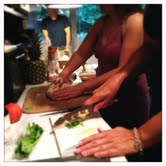 So we did what any self-respecting food lovers on a schedule would do: took a trip to Whole Foods, baby!
So we did what any self-respecting food lovers on a schedule would do: took a trip to Whole Foods, baby!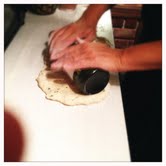 AMY: Bob actually suggests putting the dough between two well-oiled pieces of parchment before rolling it out. I think that would have saved a little time … and a big floury mess.
AMY: Bob actually suggests putting the dough between two well-oiled pieces of parchment before rolling it out. I think that would have saved a little time … and a big floury mess. SARAH: Some of us had to put our beers down to help. Sadly, we have not perfected the art of oiling grills and carrying pizza dough while also drinking cold beverages.
SARAH: Some of us had to put our beers down to help. Sadly, we have not perfected the art of oiling grills and carrying pizza dough while also drinking cold beverages.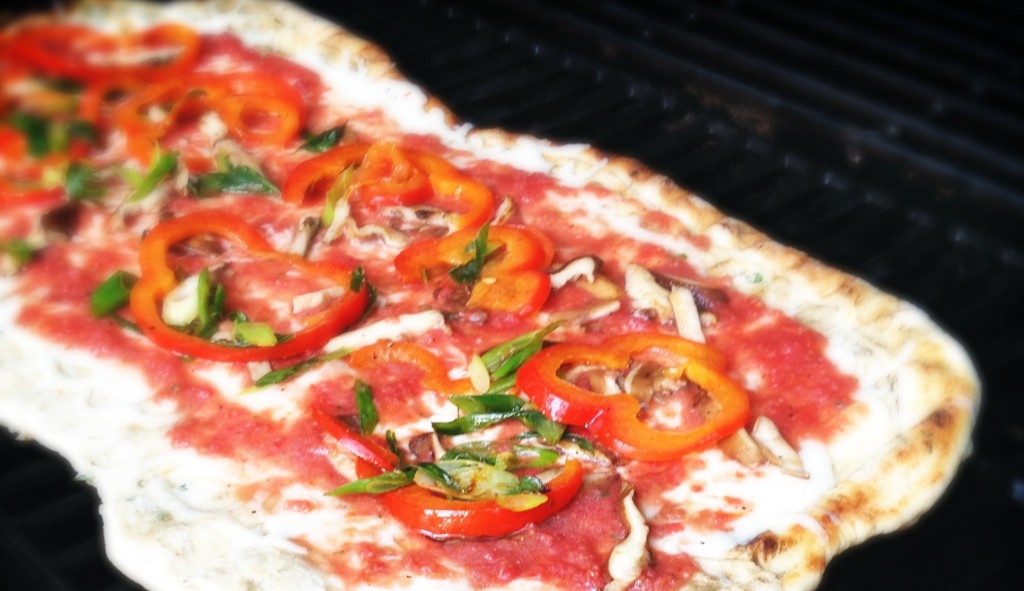 y magic step to grilling pizza. Since it cooks so quickly on the grill, the toppings need to be pre-cooked, depending on what you’re using. We chose simple vegetables: Shitake mushrooms, red bell peppers and green onions. I sauteed them on the stovetop with a little olive oil, salt and pepper. Nothing fancy, just wanted to take the crispy edge off of them. And atop the sauce they went.
y magic step to grilling pizza. Since it cooks so quickly on the grill, the toppings need to be pre-cooked, depending on what you’re using. We chose simple vegetables: Shitake mushrooms, red bell peppers and green onions. I sauteed them on the stovetop with a little olive oil, salt and pepper. Nothing fancy, just wanted to take the crispy edge off of them. And atop the sauce they went.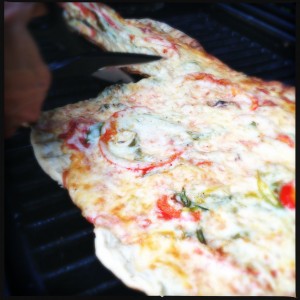 APRIL:
APRIL: 